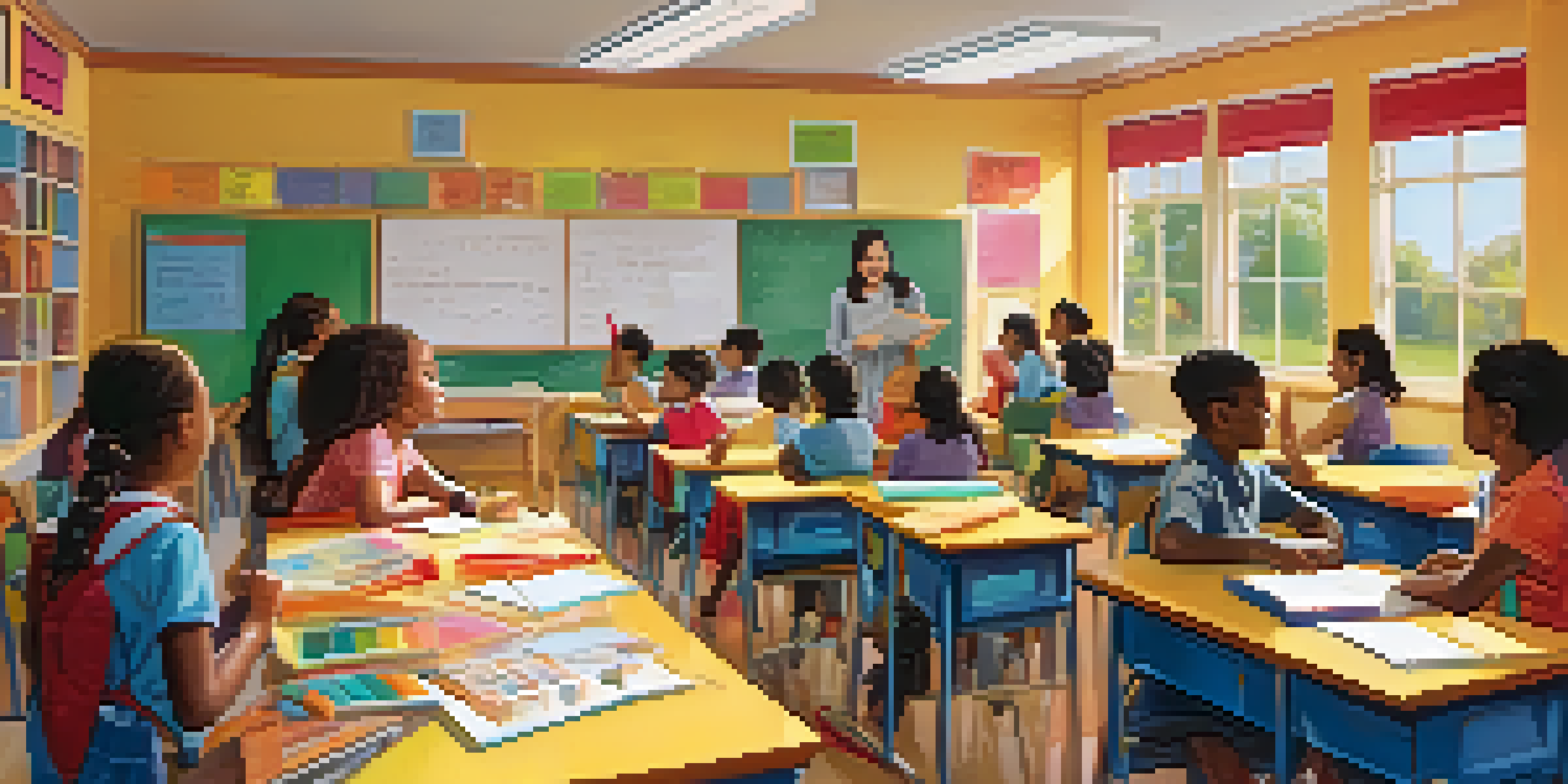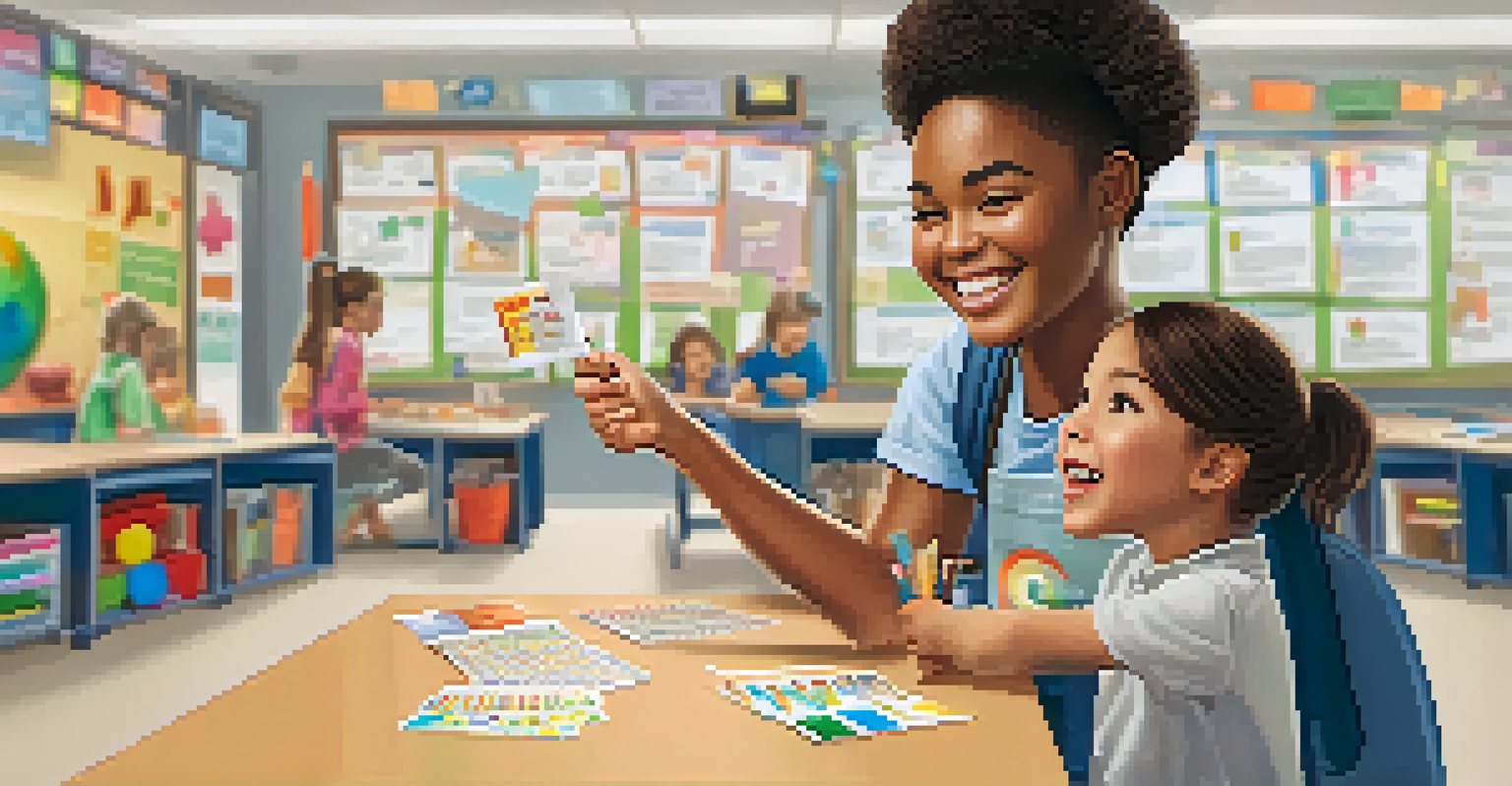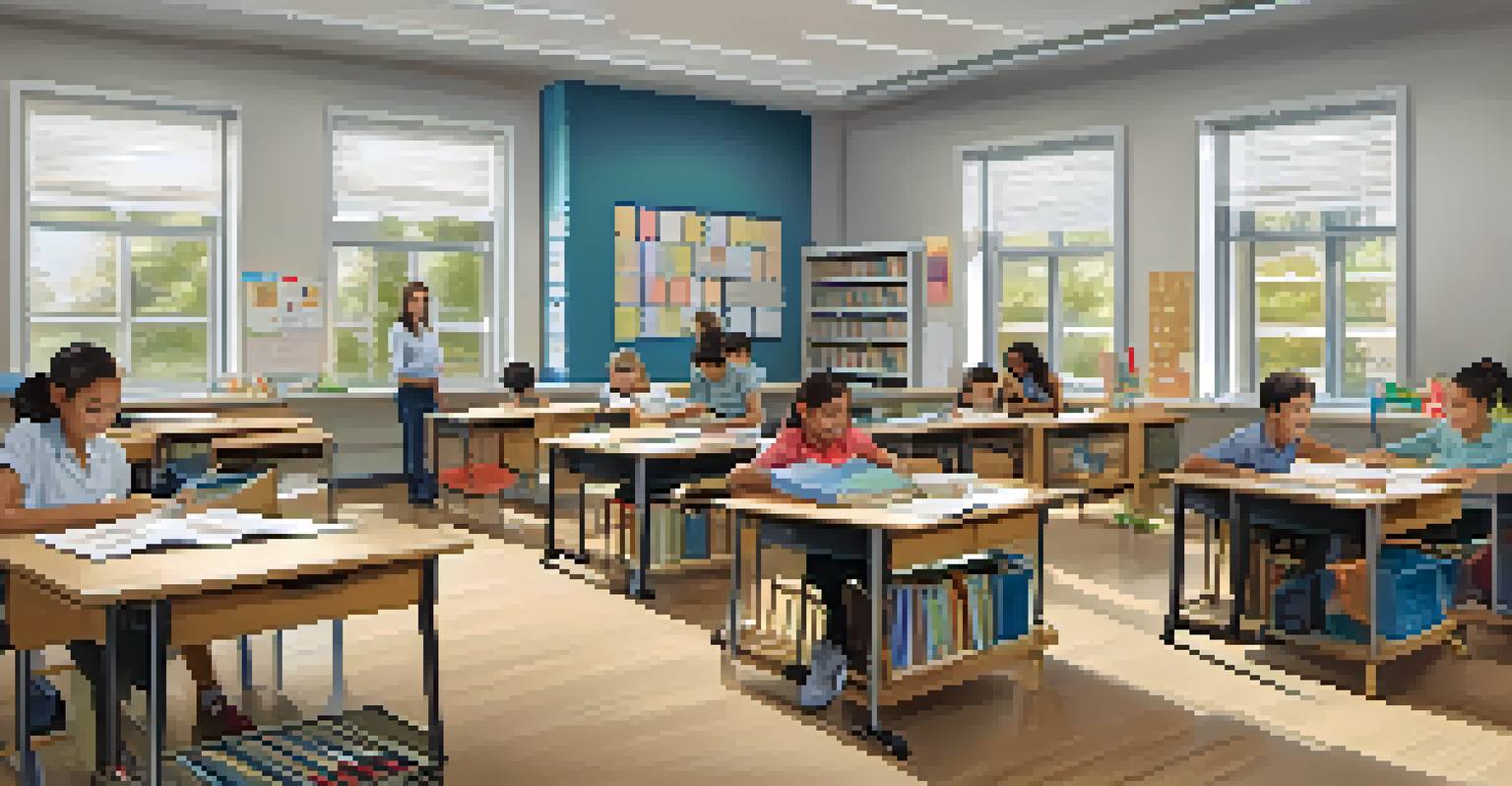Utilizing Behaviorist Strategies for Classroom Management

Understanding Behaviorism in Education
Behaviorism is a learning theory that focuses on observable behaviors rather than internal thoughts. In the classroom, this means that teachers can shape students' behavior through reinforcement strategies. By understanding how behaviors are learned and maintained, educators can create a structured environment that promotes positive actions and reduces disruptions.
Behavior is a mirror in which everyone displays his own image.
This approach is grounded in the idea that all behaviors are a response to external stimuli. For instance, if a student receives praise for completing their homework, they are more likely to repeat that behavior in the future. Thus, behaviorism emphasizes the importance of the environment in influencing student actions.
Utilizing behaviorist strategies means recognizing the power of reinforcement—both positive and negative. When teachers effectively apply these strategies, they can foster a more productive classroom atmosphere where students feel motivated to engage and learn.
Setting Clear Expectations for Students
One of the first steps in utilizing behaviorist strategies is to set clear expectations for student behavior. This involves outlining what is acceptable and unacceptable in the classroom, which helps students understand the boundaries. Clear guidelines provide a framework that students can rely on, making it easier for them to meet expectations.

For example, a teacher might create a list of classroom rules and display them prominently. By referring back to these rules regularly, educators reinforce their importance and help students internalize them. This consistency not only clarifies what is expected but also minimizes confusion and misbehavior.
Behaviorism Shapes Classroom Actions
Behaviorism emphasizes observable behaviors and the use of reinforcement strategies to create a positive learning environment.
When students know what is expected of them, they are more likely to engage in positive behaviors. This proactive approach to classroom management sets the stage for a conducive learning environment, where students feel secure and focused.
Implementing Positive Reinforcement Techniques
Positive reinforcement is a cornerstone of behaviorist strategies. This technique involves rewarding desirable behaviors to encourage their recurrence. For instance, a teacher might give praise, stickers, or small rewards when students follow the rules or complete assignments on time.
The greatest sign of success for a teacher is to be able to say, 'The children are now working as if I did not exist.'
The effectiveness of positive reinforcement lies in its ability to create a supportive learning atmosphere. When students feel recognized for their efforts, it boosts their self-esteem and motivates them to continue striving for success. This method not only encourages good behavior but also fosters a sense of community among classmates.
In practice, teachers can vary the types of reinforcement they use, ensuring that different students are motivated by different rewards. By tailoring rewards to individual preferences, teachers can enhance engagement and foster a positive classroom culture.
Utilizing Negative Reinforcement Wisely
Negative reinforcement is another behaviorist strategy that can be effective when used appropriately. Unlike punishment, negative reinforcement involves removing an unpleasant stimulus to increase desired behavior. For example, allowing students to skip a homework assignment if they consistently follow classroom rules can motivate them to maintain good behavior.
It's essential, however, to differentiate between negative reinforcement and punishment. While punishment aims to decrease undesirable behavior, negative reinforcement encourages the continuation of positive actions by alleviating stressors. This subtle distinction helps teachers use these strategies more effectively.
Clear Expectations Foster Success
Setting clear expectations for student behavior helps minimize confusion and encourages positive actions in the classroom.
When implemented thoughtfully, negative reinforcement can support a more balanced approach to classroom management. It emphasizes the importance of creating a supportive environment where students can thrive, rather than solely focusing on discipline.
Creating a Structured Environment
A structured classroom environment is crucial for effective behavior management. This involves organizing the physical space, scheduling activities, and maintaining consistent routines. When students know what to expect, it reduces anxiety and allows them to focus on learning.
For instance, a well-structured classroom might include designated areas for different activities, such as reading, group work, and independent study. Additionally, establishing a daily routine helps students anticipate transitions, minimizing disruptions. This predictability promotes a sense of security among students.
Moreover, structure supports the implementation of behaviorist strategies by providing a solid foundation. When students feel secure in their environment, they are more likely to respond positively to reinforcement and adhere to classroom expectations.
Monitoring and Assessing Student Behavior
Monitoring and assessing student behavior are integral components of behaviorist strategies. Regular observation allows teachers to identify patterns in student actions, helping them determine which strategies are effective and which may need adjustment. This ongoing assessment is vital for fostering a supportive learning environment.
For example, a teacher might keep a behavior log to track individual student progress over time. By documenting specific incidents and noting improvements, educators can tailor their reinforcement strategies to meet the needs of each student. This personalized approach encourages more significant growth.
Engagement Enhances Learning Outcomes
Active student participation and personalized reinforcement strategies lead to higher motivation and better learning experiences.
Additionally, ongoing assessments can inform classroom management decisions. When teachers understand their students' behaviors better, they can make informed choices about interventions and supports, ultimately leading to improved outcomes.
Engaging Students through Active Participation
Engaging students in their learning process is a key aspect of effective classroom management. When students actively participate in lessons, they are less likely to become disruptive. Behaviorist strategies can enhance engagement by incorporating interactive activities that encourage students to take ownership of their learning.
For instance, group projects or hands-on experiments can motivate students to collaborate and invest in their education. When students see their contributions valued, it reinforces their positive behaviors and keeps them focused on the task at hand. This active involvement is crucial for maintaining a productive classroom environment.

Moreover, incorporating student feedback into classroom management practices can further enhance engagement. When students feel heard and involved in decision-making, it fosters a sense of agency and responsibility, ultimately leading to higher levels of motivation and participation.